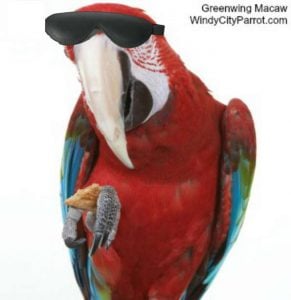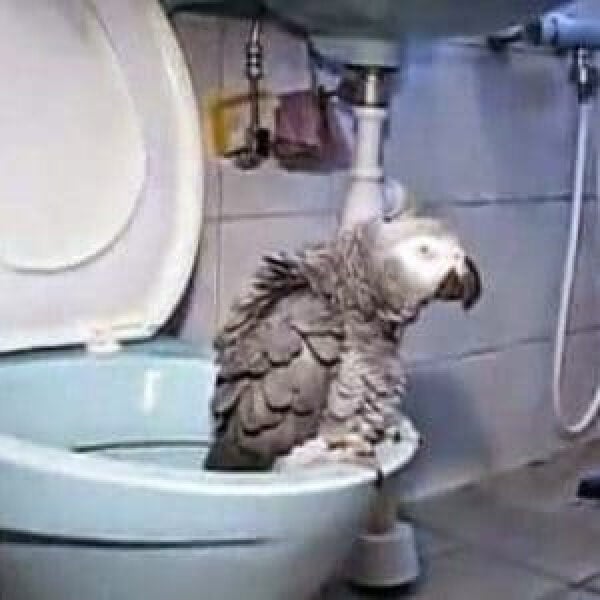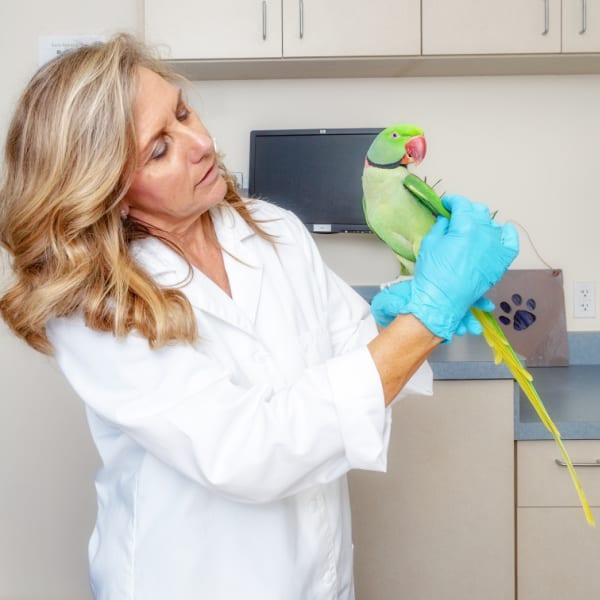
Bird Accidents and Medical Emergencies Happen – How Prepared Are You?
Last Updated on by Catherine Tobsing
So we were about to leave the Birdie Boutique the other night. Five minutes before close and we get a call.
“Would you mind staying a little late – I know you’re closing but I need to come over so you can help me learn how to put a harness on my bird, I want to take the bird to the park tomorrow because it’s going to be nice”?
Long story short – our answer was – no.
Anyone who has ever done business with us knows that we will bend over backward to perform the highest level of customer service.
This was a much bigger issue than simply helping the customer. This leads me to the subject of this week’s topic.
Having an exotic bird or parrot means being prepared.
Much more so than most pets.
You can take a young and dumb puppy, put a leash on him and take him for a walk outside and he or she will be plenty happy to get out there.
The problem I had with the customer seeking help installing the harness on his bird was multi-fold.
Why would anybody want to take the bird to a park on any sort of tether?
Call me crazy but the only thing I see in my mind’s eye is an appetizer on a string for all the dogs in the park.
The only difference between a pet bird and a wild bird in the park is the string – that’s why wild birds get away and the bird with an anchor won’t.
Waiting until the last minute to introduce almost any new bird accessory to an exotic bird is problematic at the very least.
We offer a video on how to install the harness below.
But we can’t guarantee that your bird will readily accept it.
Best practices dictate that because of the leery nature of birds, it’s important that you let them get accustomed to anything new.
There are a variety of ways to do this but it starts with putting the item like a harness somewhere where the bird can simply see it for a few days.
The next step would be to take a piece of the harness and gently pull it across the bird’s body allowing them to feel and get used to the feel.
The touchy-feely process might take a week or two before you even begin to try to get your bird to allow you to slip on the device – and so it goes.
BTW, after we explained all this he was happy to take the bird to the park in a carrier.
Blood Feathers
Some people freak out at the sight of blood, while others do much better.
In any case, the probability is high that your bird will experience a broken blood feather or two in its long lifetime.
All birds have a blood feather (a.k.a. pin feather) for every feather molted out.
Once the others (feathers) have blood circulating through the quill, the area close to the base of the feather they will typically have a dark blue/purplish color in the quill (area).
The dark color is blood.
Because blood recedes as the feathers grow, the mature feathers are opaque (losing their color).
The problem is that a bird can bleed profusely when blood feathers are broken so the feather really has to come out quickly from the skin to stop the bleeding.
Some people choose not to pull the blood feather if there is not a lot of bleeding.
If there is not a lot of bleeding you could use flour or Morning Bird Natural Blood Stop Powder
At the same time, it’s important to keep in mind that birds’ blood does not clot well compared to other mammals. If you choose not to pull the blood feather you really have to monitor the bird closely because if it bumps into an object, the bleeding can begin again which can cause serious illness or even death.
We feel it’s best to pull the blood feather out. Once a feather has been removed the follicle area on the skin heals. Soon after the bleeding stops, you’ll see new feather growth.
Blood Feather
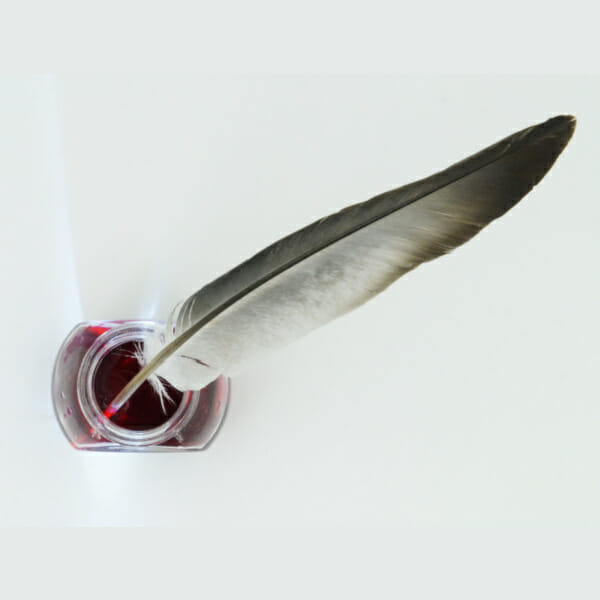
Generally, it is not necessary to take a trip to the vet to remove the blood feather, it’s not all that difficult if you get through your own queasiness.
It’s best for two people to pull a blood feather. One to restrain the bird using a towel.
The second person should remove the blood feather with needle nose pliers. Tweezers don’t have the pulling strength necessary.
You want to place the tip of the needle nose pliers at the base of the quill, which is the part adjacent to the skin.
A single firm smooth pulling action in the direction of the feather growth will remove it easily. After the feather’s been removed,
Lastly but certainly very important, make sure the entire feather shaft is removed from the follicle or the bleeding will not stop.
Before you pull a blood feather you want to make sure you know the exact spot where the feather goes directly into the skin on your bird’s wing.
You’ll know that you got the entire feather out when you see a small round bulb at the tip of the feather.
If you’re not up to the task by all means see a vet.
If the accident happened outside office hours (which is usually the case) make sure you apply flour or a gel coagulant with your bird’s wings spread.
Use a sterile gauze pad to apply pressure and wait until the bleeding stops.
There are a number of reasons birds get blood feathers.
Sometimes they fall during a night fright. Blood feathers can be broken in a flight accident when your bird is preening or just frightened and flapping about.
Clipping feathers too short may not offer the right amount of protection for new feathers that are just coming in.
What happens is the short-trimmed feathers break on impact because the longer primary flight feathers (which are now cut) are not there to take the brunt of the impact.
Stick training –
Having your bird ready to jump on a “familiar” stick which could be a perch, a dowel rod or even a broomstick should be an essential part of your repertoire.
Some people say “My bird can “step up” on my hand and never bites me, I really don’t need to worry about stick training”.
This is all well and good until something happens to frighten your bird and your bird ends up behind a piece of furniture or a kitchen appliance neither of which can easily be moved.
If you can’t reach the bird you are going to have to use something and in a situation like that your bird is already freaked out. It’s times like that you’ll thank me for having this conversation with you because you’ll have that “familiar” long stick that your bird will be happy to jump up on so as to be extricated as quickly as possible.
Written by Mitch Rezman
Approved by Catherine Tobsing
your zygodactyl footnote
Author Profile

Latest entries
 Bird & Parrot CareJune 20, 2025Understanding the Best Way to Use Prevue Pets Mimic Me Voice Trainer
Bird & Parrot CareJune 20, 2025Understanding the Best Way to Use Prevue Pets Mimic Me Voice Trainer Bird BehaviorJune 6, 2025How Do I Keep My Parrot From Dumping His Food Every Day?
Bird BehaviorJune 6, 2025How Do I Keep My Parrot From Dumping His Food Every Day? Birds & LightingMay 16, 2025I Am Seeking Clarity About Lighting for My Birds Cage
Birds & LightingMay 16, 2025I Am Seeking Clarity About Lighting for My Birds Cage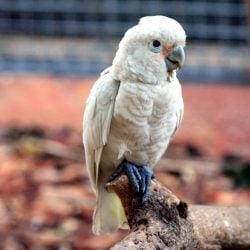 Bird RescueApril 29, 2025How Do We Re-Home a 17 yr Goffin Cockatoo?
Bird RescueApril 29, 2025How Do We Re-Home a 17 yr Goffin Cockatoo?
